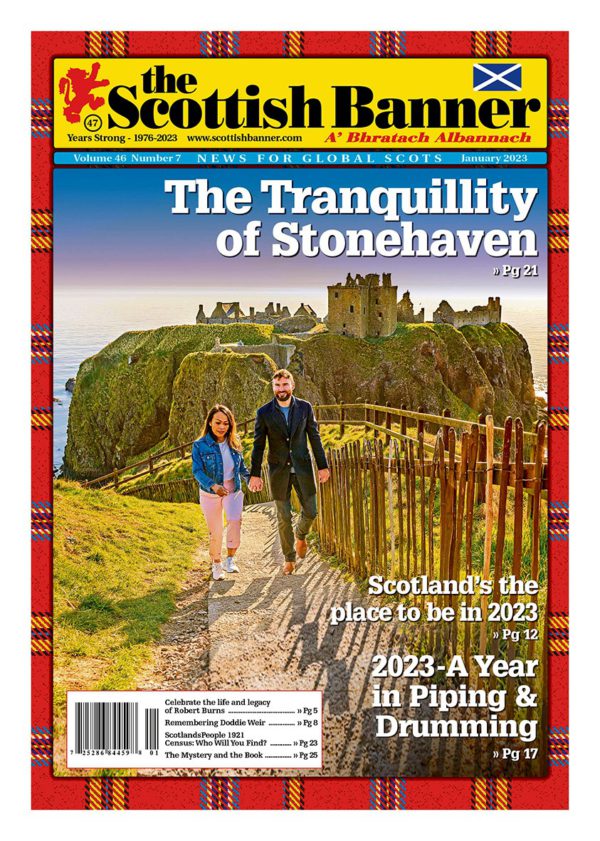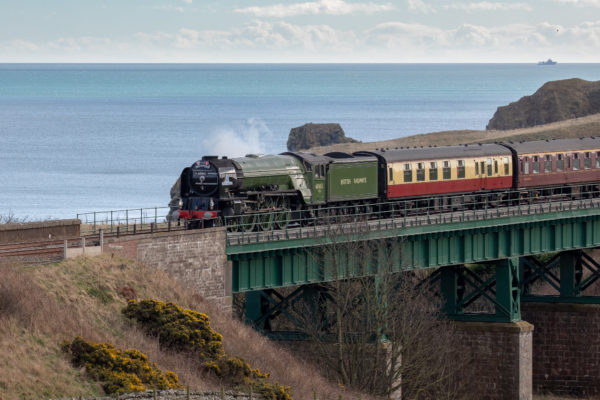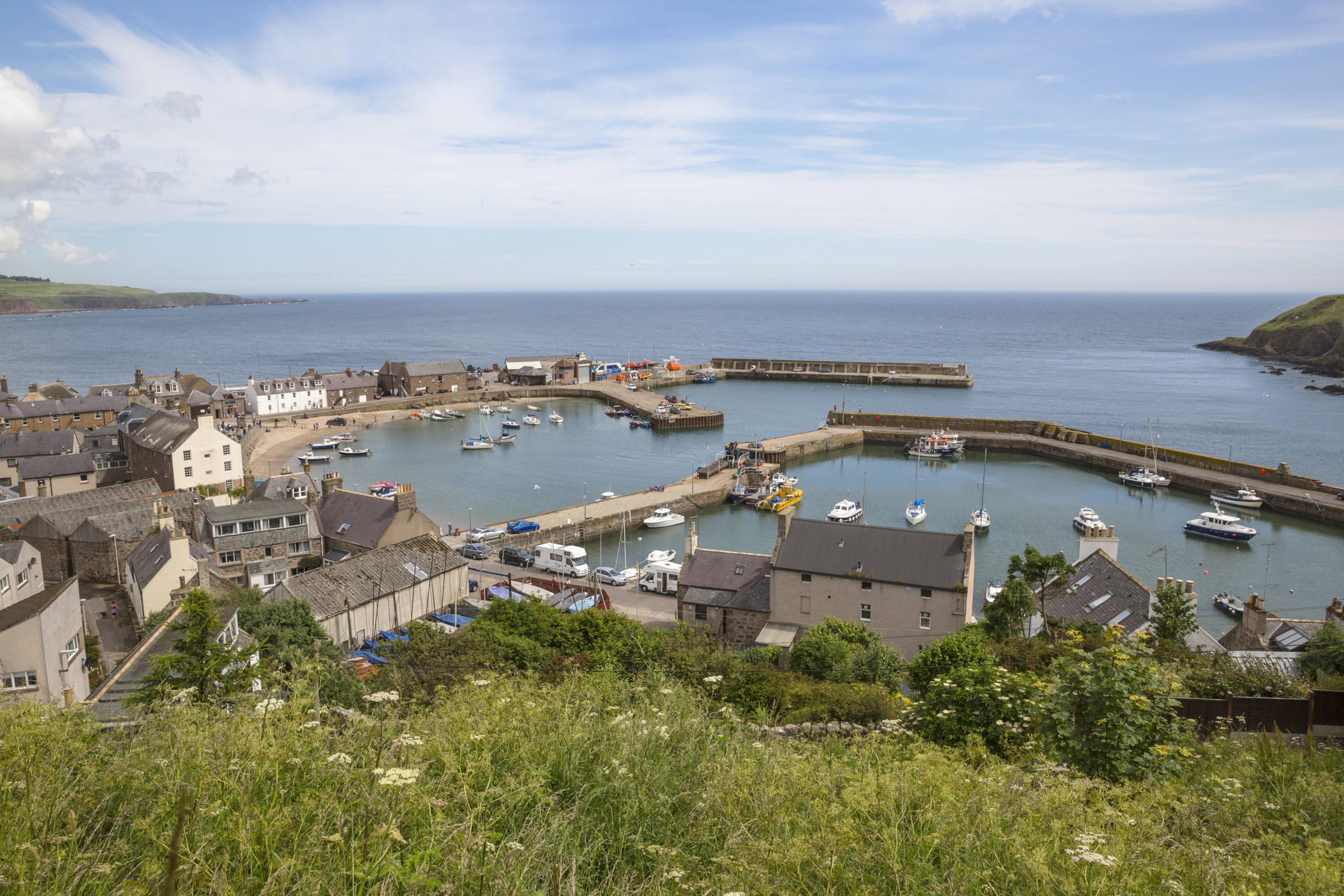For many centuries the wee fishing port on Scotland’s east coastline has been a magnetic location for summer tourists, a distinction it retains to this day. Made up of delightful seascapes, an enchanting harbour and a lively town centre, it is an ideal spot for a day trip or a longer visit. Lying on a picturesque bay 13 miles south of Aberdeen, Stonehaven, or “Stoney” as it’s known by the locals, is sadly no longer a high-level fishing port, but it still preserves a great deal of its historic attractions.

As well as the age-old harbour there is the 15th century Tolbooth which includes an enchanting museum of local history and fishing. Another crowd-puller is the impressive sight of Dunnottar Castle which is perilously perched on a rocky cliff just south of the town. Besides having many historic connections, the scenic castle has recently been used for the location of several smash hit movies. The harbour was constructed to supply Dunnottar Castle and for many years the tiny port was very busy. In fact, at the turn of the last century when the herring fishing was in vogue as many as 150 boats regularly tied up at Stonehaven, so much so that one could “walk” from one side of the harbour to the other without getting your feet wet!
Now only a handful of vessels fish regularly, and the harbour is utilised mainly by pleasure craft. But there has been a fresh revival in the fishing industry by scallop boats which arrive in the summer months from as far away as the Isle of Man to dredge the sea bottom just offshore of Stonehaven Bay.
The Feein’ Market
Another attraction Stonehaven presents is the Feein’ Market, held in the Market Square the first Saturday in June. This is a restoration of the old feein’ market when, at the end of a working contract, farmhands who fancied a change of service, gathered to become “fee’d” with new employers after thrashing out a working arrangement regarding fresh terms of employment. The new Feein’ Market is currently organised by the Stonehaven Business Association and covers the entire Market Square, giving visitors a rare spectacle of how farm-life survived all those generations ago.
The wee town’s premier event though ironically takes place at a time of year when only a handful of proper tourists stay in the district, yet visitors from all over Britain descend on the town to witness it. The Stonehaven Fireball Ceremony is held every Hogmanay (December 31st) and is an extravaganza observed by thousands. The highlight of the ritual is when participants walk through the towns streets twirling gigantic fireballs above and round their heads! The fireballs are constructed of wire netting bags crammed with various kinds of combustible substances, and are swung round the head with the help of a long wire rope attached to a handle. The etiquette is said to stretch back to Pagan times where twirling the fireballs acted in fending off evil spirits which might endanger the town during the next 12 months.
The initial settlement at Stonehaven was little more than a number of tiny fishing huts positioned around Stonehaven Bay, but that all changed in 1600 when the wee hamlet was upgraded to become the County Town of Kincardineshire when the seat of the Sheriffdom of Kincardine was shifted from the ancient Kincardine township at Kincardine Castle close to the village of Fettercairn. When the fishing port was elevated to become the administrative centre of the county, it was most crucial to acquire a municipal building and at the time the only appropriate building in the vicinity was the storehouse owned by the Earl of Marischal on the harbour’s northern confines. The repository was hastily adapted to embody a courthouse and prison and, having been repaired and renovated over the centuries, it still stands to this day.
The New Town

Stonehaven’s New Town expanded in around 1781 when a bridge was erected over the Carron Water by Robert Barclay of Ury, giving more easy access to the town by those living to the south. The New Town was created around the nucleus of the Market Square with the town expanding as ripples from its centre. The famous clock tower was raised in 1857.
Stonehaven expanded as the years passed and it was not long before the railway came to town. The railway did in fact reach the town but due to the ground features of the area it was obligatory to construct the station just up the hill from the town. This resulted in more houses being constructed and a thriving suburban area soon connected Stonehaven with its railway station.
In more recent times the entire length of the town’s main road was extensively restored. Great care was taken to re-lay the old cobblestones on the surface of the street to recreate a 19th century atmosphere. The streetlamps were also given the time treatment with fine reproductions of old gas streetlights. So, if you find yourself on the north-east coast road travelling north to Aberdeen or south to Dundee, make sure you leave the main road and drive a few hundred metres down into Stonehaven. Spending a couple of idyllic hours in the tiny hamlet will put your mind completely at rest and set you up nicely for the remainder of your journey.


Great wee town to visit, full of history, welcoming Scots.